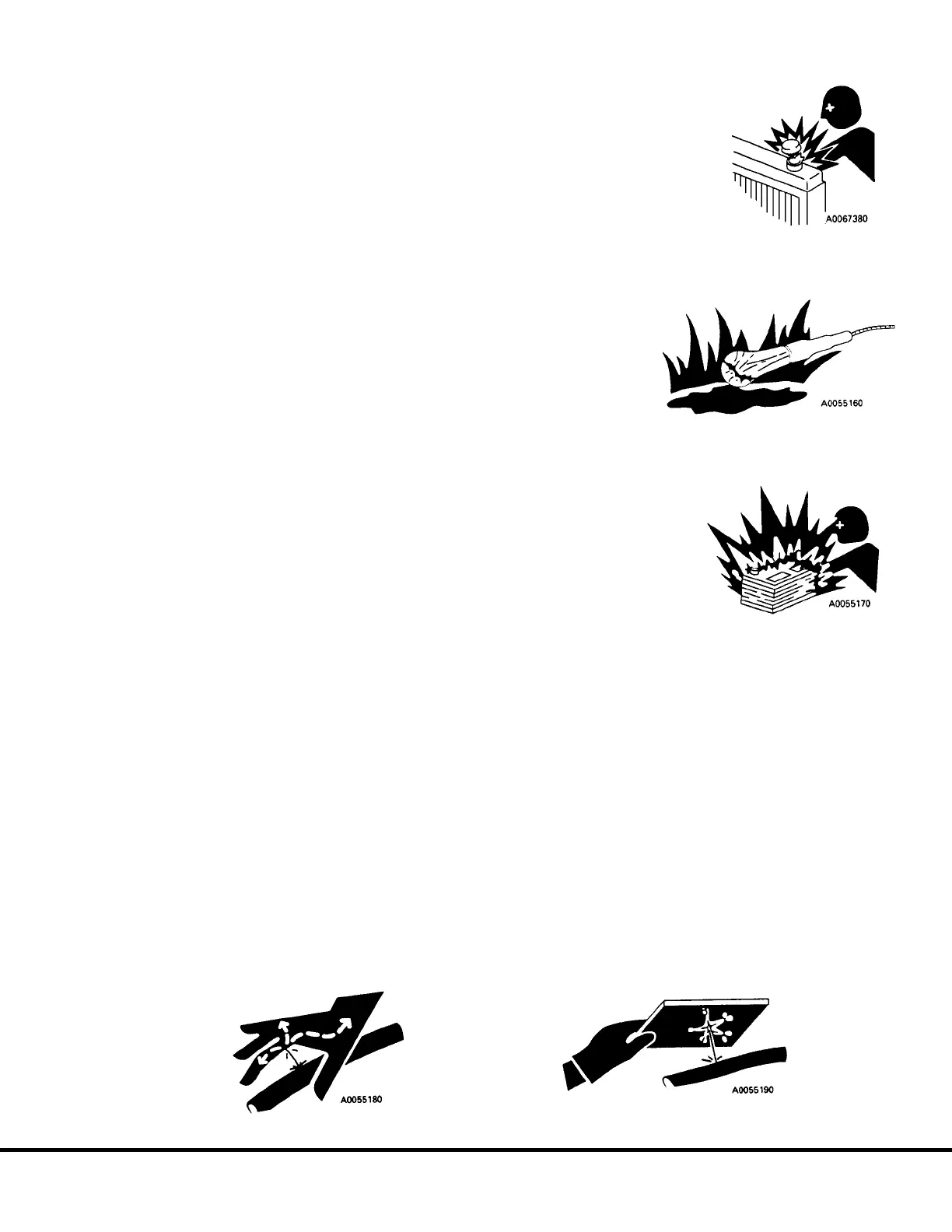RADIATOR WATER LEVEL
• If it is necessary to add water to the radiator, stop the engine and allow the engine
and radiator to cool down before adding the water.
• Slowly loosen the cap to relieve pressure before removing the cap.
USE OF LIGHTING
When checking fuel, oil, coolant, or battery electrolyte, always use lighting with
anti-explosion specifications. If such lighting equipment is not used, there is
danger or explosion.
PRECAUTIONS WITH BATTERY
• When repairing the electrical system or when carrying out electrical welding,
remove the negative (-) terminal of the battery to stop the flow of current.
HANDLING HIGH-PRESSURE HOSES
• Do not bend high-pressure hoses or hit them with hard objects. Do not use any bent or cracked piping, tubes or
hoses. They may burst during use.
• Always repair any loose or broken fuel hoses or oil hoses. If fuel or oil leaks, it may cause a fire.
PRECAUTIONS WITH HIGH PRESSURE OIL
• Do not forget that the work equipment circuits are always under pressure.
• Do not add oil, drain oil, or carry out maintenance or inspection before completely releasing the internal pressure.
• If oil is leaking under high pressure from small holes, it is dangerous if the jet of high-pressure oil hits the skin or
enters the eyes. Always wear safety glasses and thick gloves, and use a piece of cardboard or a sheet of wood
to check for oil leakage.
• If you are hit by a jet of high-pressure oil, consult a doctor immediately for medical attention.
A03017 General Safety and Operating Instructions A3-13
